Eating on the Med when You're Stateside Instead
A Review of The Mediterranean Dish: Simply Dinner by Suzy Karadsheh
Leaving aside all the well-documented reasons that diets in the prescriptive sense are a bummer, I also find them creatively stifling1 On the flip side, taking a deep dive into a certain way of eating via a cookbook is very fun. And if something is delicious and has me eating more vegetables, even better.
So as soon as Mediterranean Dish: Simply Dinner by Suzy Karadsheh arrived in my PO Box courtesy of Clarkson Potter (thanks!) I was ready to get into it.
Suzy, for those who don’t know, is a popular blogger and purveyor of Mediterranean goods over at The Mediterranean Dish. I have never really followed her online output, only becoming aware of her work two years ago when her first book, The Mediterranean Dish Cookbook, became very popular. I purchased a Kindle copy, though sadly never cooked from it because, well, I was seven months pregnant and it got away from me (okay and maybe I was baselessly scared of eating feta cheese).
But if there’s anything I love more than a debut cookbook, it’s the near-inevitable “easy” version that follows these days. Give me your quick, simple, prep-ahead recipes, food writers. I want them all! For those who hate this pared down approach, it is people like me who are to blame. I am the woman on the Clapham omnibus. Apologies.
So anyway, Simply Dinner was right up my alley.
About the Author’s Interpretation of Mediterranean
You’ve probably heard of the Mediterranean diet. Since the 1990s, it has been listed as one of the healthiest diets on the planet, and, ostensibly, a great way to eat for your heart, brain, and longevity. All good things.
But is “Mediterranean” in the culinary sense broad enough to be meaningless? I’ll give you a sec to look at the below map in case your geographical memory recall is terrible like mine, and think about the vast range of places that can be called Mediterranean:
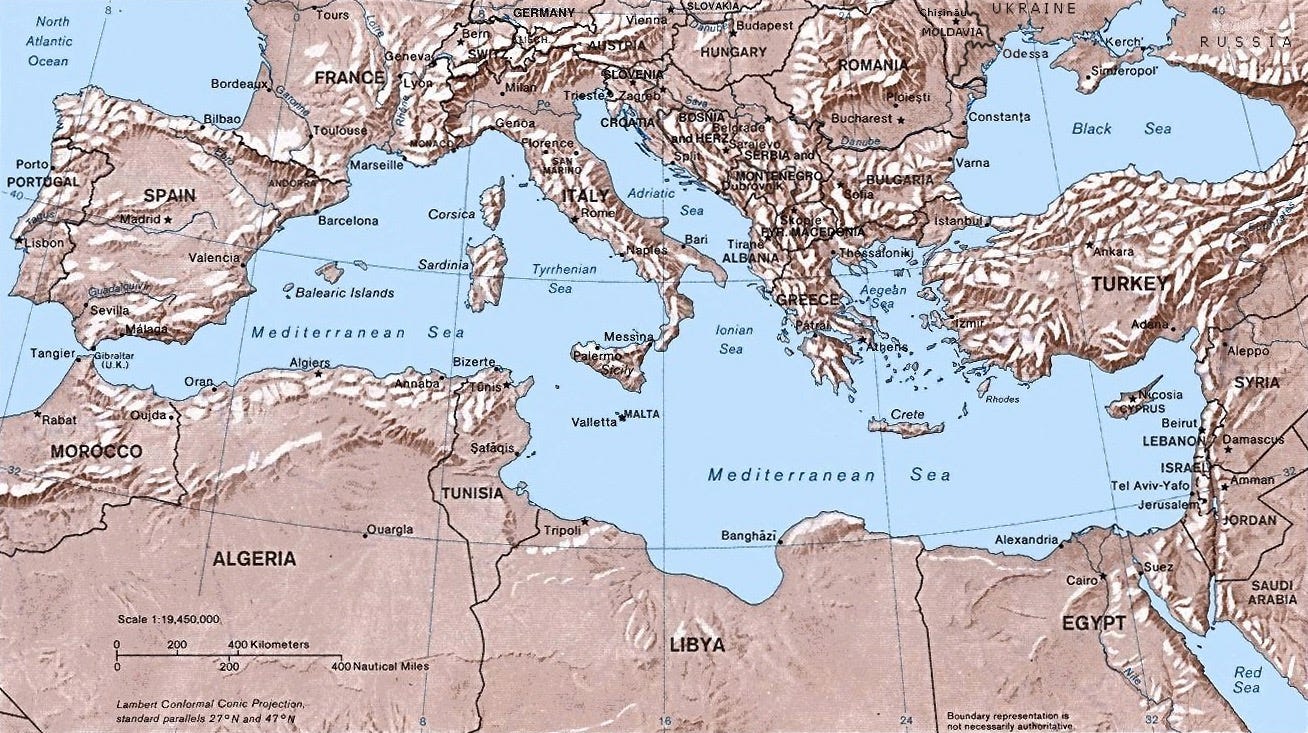
All I’ll say is, it seems like a broad brush. What does it include food wise, then, in popular and medical parlance? I haven’t done a deep dive, but I am an avid consumer of clickbait nutrition articles and, it seems to me, the Mediterranean diet generally boils down to eat lots of plants, legumes, nuts, seafood, grains, and olive oil, and go easy on the meat and sweets.
So what is Suzy’s version of Mediterranean within this rather flexible definition?
In her first book, Suzy writes a beautiful and evocative introduction about growing up in Port Said in Egypt and wandering along the Suez Canal, that monumental symbol of cultural and commercial exchange.
This upbringing means that North African and Middle Eastern flavors heavily influence her cooking, though she also became familiar with Greek, Italian, British, French and other flavors when she lived at a such a significant culinary crossroads.
Suzy then moved to Canada for high school and the United States for college where she met and married a man with Jordanian ancestry. Far from her family, Suzy’s mother in law took her under her wing and taught her more about cooking. Suzy calls this her Levantine influence, which includes a lot of rice, warm spices, and hummus among other things.
And finally, Suzy counts all the states in the US where she has lived—Michigan, Iowa, and Georgia—as influences, if more subtly.
That is to say, it is a well-rounded interpretation of Mediterranean cuisine that tacks a bit more to the sea’s southeastern parts with some slight Americanization. (In this book, for example, there are Mediterranean spins on chili and chicken wings.)
In practice, as far as the book is concerned, it translates to a lot of vegetables and legumes—chickpeas, predominantly—as well as poultry and seafood. Beef, pork, and lamb make occasional appearances. Frying is not out of the question. Olive oil is used with abandon—I went through about three quarters of a bottle cooking from it for a week. Parsley and other fresh herbs are prominent. Suzy also like to say “garlic is life” so that gives you a clue as to her feelings on that.
The book, as the title suggests, is focused on dinner, though proper main dishes make up somewhere around half of the books recipes, maybe even a bit less. These include a chapter each on quick meals, soups, grilled food, and one-pan mains. The rest of the book, and the bulk of the chapters, is made up of small plates (a dinner option if you love washing lots of dishes), salads (mostly side salads), sides (breads and vegetables), protein add-ons, drinks and desserts, and condiments.
There is a note near the beginning about meal prep, but this isn’t really a meal prep book. There are little “Make-Ahead Tips” scattered about for things that can be prepared ahead of time, as a nod to this way of cooking, and which I appreciated, but not everything fits in this category.
My Life on the Mediterranean Diet
Mediterranean pantry prep
To begin, I thought it would be fun to make a homemade Harissa Paste. Suzy includes a recipe that uses New Mexico chiles, which she states are close to the chiles traditionally used in Tunisia, and, as a New Mexico resident, I couldn’t resist.
Now, to be fair, Suzy never promised that the condiments chapter would be simple, but I just have to say that, when making this, I felt like the very hungry caterpillar: I went through one pot, one mortar and pestle, one bowl, one colander, and one food processor. And I roasted my own peppers so I had to steam those. It was an affair.
But I was extremely happy with the resulting paste. It is incredibly fresh tasting and, importantly, not too spicy. That means, I can use it in many dishes and not burn my kids’ mouths. I have been putting it to work constantly since I made it.
Dinner, not always simply
Next, I made the Sheet-Pan Chicken Meatballs and Veggies. The entire thing was simply seasoned and easy to put together, with tomatoes, mushrooms, onions, and zucchini all flavored with Italian seasoning and garlic. I assembled it, as suggested, ahead of time, and then threw it in the oven a bit before dinner. The result was much more than I thought it would be based on the ingredients. It was hearty, flavorful, and filling, and I could honestly eat it once a week for the next year and be happy.
And I would do that, too, but my children would not touch a single part of it.
To use some of my harissa, I then made the Penne with Roasted Bell Pepper and Harissa Paste. Except I used fusilli instead of penne so I could market it as “accordion pasta” to the under four set.
This recipe was super simple to throw together, very flavorful, and a huge hit with everyone at my table. I have already made it twice.
On fish night, I went for the Garlic and Dijon Baked Salmon and paired it with Broccoli Fritters. Neither of these dishes was particularly hard—the salmon requiring a little foil tent and the fritters fried in a half inch of olive oil (pricey!). But neither of them seemed particularly worth the effort either.
The Armenian Apricot and Red Lentil Soup had a bit of a strange flavor profile for me. One of my children literally cried when taking a bite. Probably not a repeat for us. The Crispy Roasted Artichoke Hearts and Creamy Feta Dressing were fine if a bit forgettable.
Like the salmon and fritters, the Kleftiko-Style Spatchcock Roast Chicken, with potatoes, vegetables, and feta was quite good, and I loved living on the leftovers for a few days. That being said, the method seemed needlessly complex. It involved creating a huge parchment package for steaming the chicken, and there was very minimal direction on how to do this. I wouldn’t call myself a kitchen novice, and even with the aid of Google, folding this monstrosity eluded me. I had to throw my hands up before finally saying well I guess that’s good enough, and plunking it in the oven.
It was good, but I’m not sure the whole, complex process made it taste any better or different than a much easier chicken in a pot or some such.
The Spicy Adana Kebabs, on the other hand, were excellent. These spiced meat sticks were easy to throw together, could be made ahead of time, and they were intensely flavorful. I made the Sumac Marinated Onions, as suggested, to go with them. The whole thing was a hit. One of my kids is still begging for the pickled onions with most meals. (Can someone make children’s eating choices make sense?)
And for dessert
Finally, I had to make some desserts. Apparently some who follow the Mediterranean diet eschew dessert, but that is not the life for me. I, personally, like to eat cake and think about how great it is for my heart.
So I made the Italian Apple-Olive Bread. It turned out somehow both crumbly and dense for me. It honestly just made me crave the Olive Oil Apple Snack Cake from At My Italian Table. We did our best but didn’t finish it before it went off.
I then made the Amygdalota (Greek Almond Cookies). A mix of egg whites, almond flour, and sugar, these were easy and really good.
Final Thoughts
Out of the thirteen recipes I tried from this book, five are keepers (harissa, meatballs, pasta, kebabs, pickled onions), one was good (almond cookies), five were fine but likely not repeats (salmon, fritters, chicken, artichokes, feta dressing), and two I did not like very much (soup, cake). But the keepers in the book are real keepers and I know I will repeat them.
The ingredients are fairly accessible, too. Some of the harder things to find for me were Aleppo pepper, Urfa pepper, pomegranate molasses, and sumac. I had some of these things on hand from other cooking adventures, but a few required a roadtrip to procure, and even then the Urfa pepper was a no-go.
There is a lot more I want to cook from this book, and I am certain I am going to make a pretty good dent in it. The food is good, the flavors are interesting, and I like all the produce it helps me consume. The food feels healthful but not austere.
It might be for you if you are dying for a Mediterranean vacation so you can try the food but you need a cheaper option and/or are pretty sure jet lag would kill you considering how tired you are on a regular basis. Or, I guess, if you like the idea of a healthy long life and want to see what all the hype is about.
My husband said it made him feel great and asked if we could eat like this always—as he made the leftovers into nachos. Balance, friends.
Acknowledging that I am fortunate enough that I have no reason to limit any kind of food category currently.




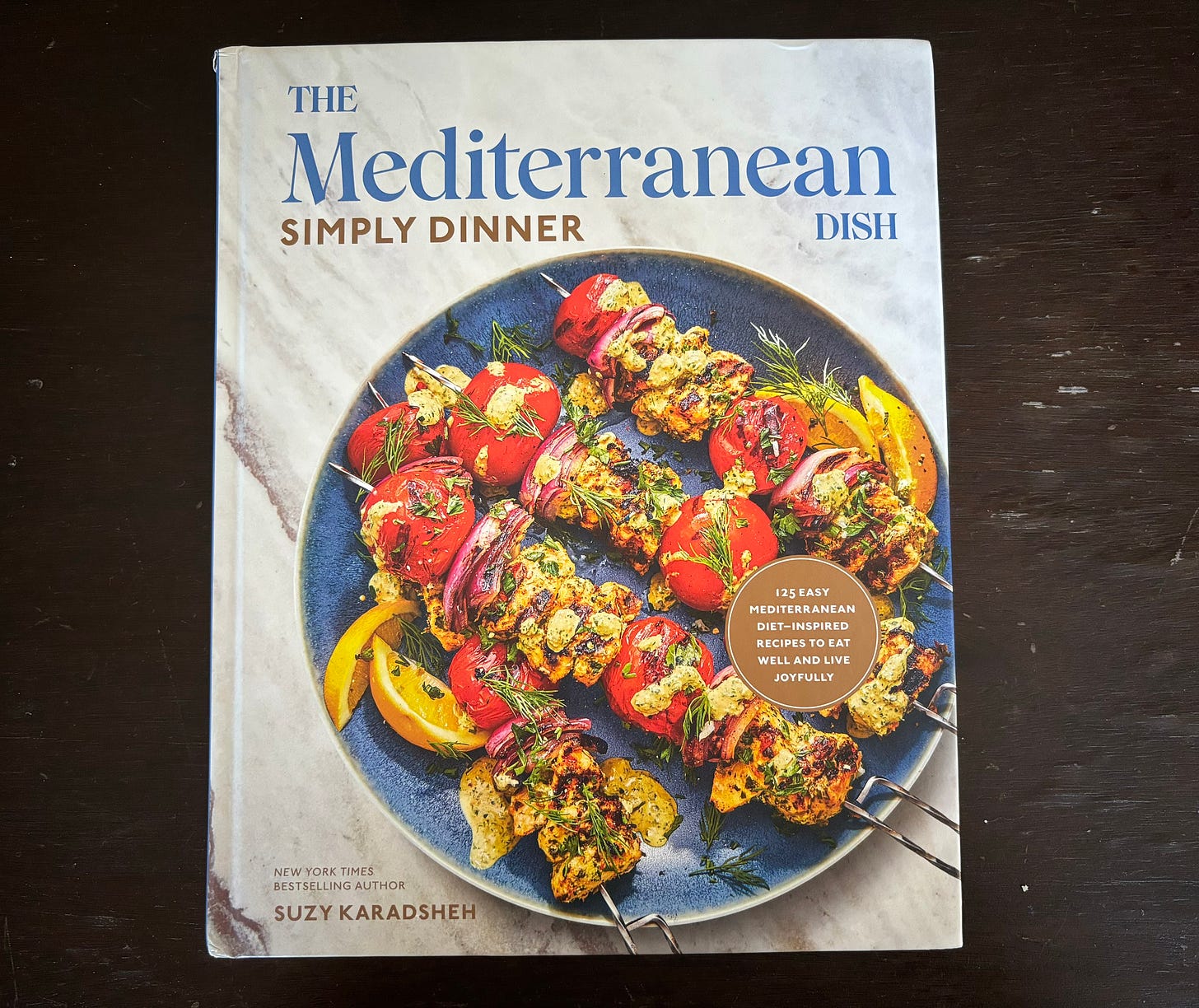
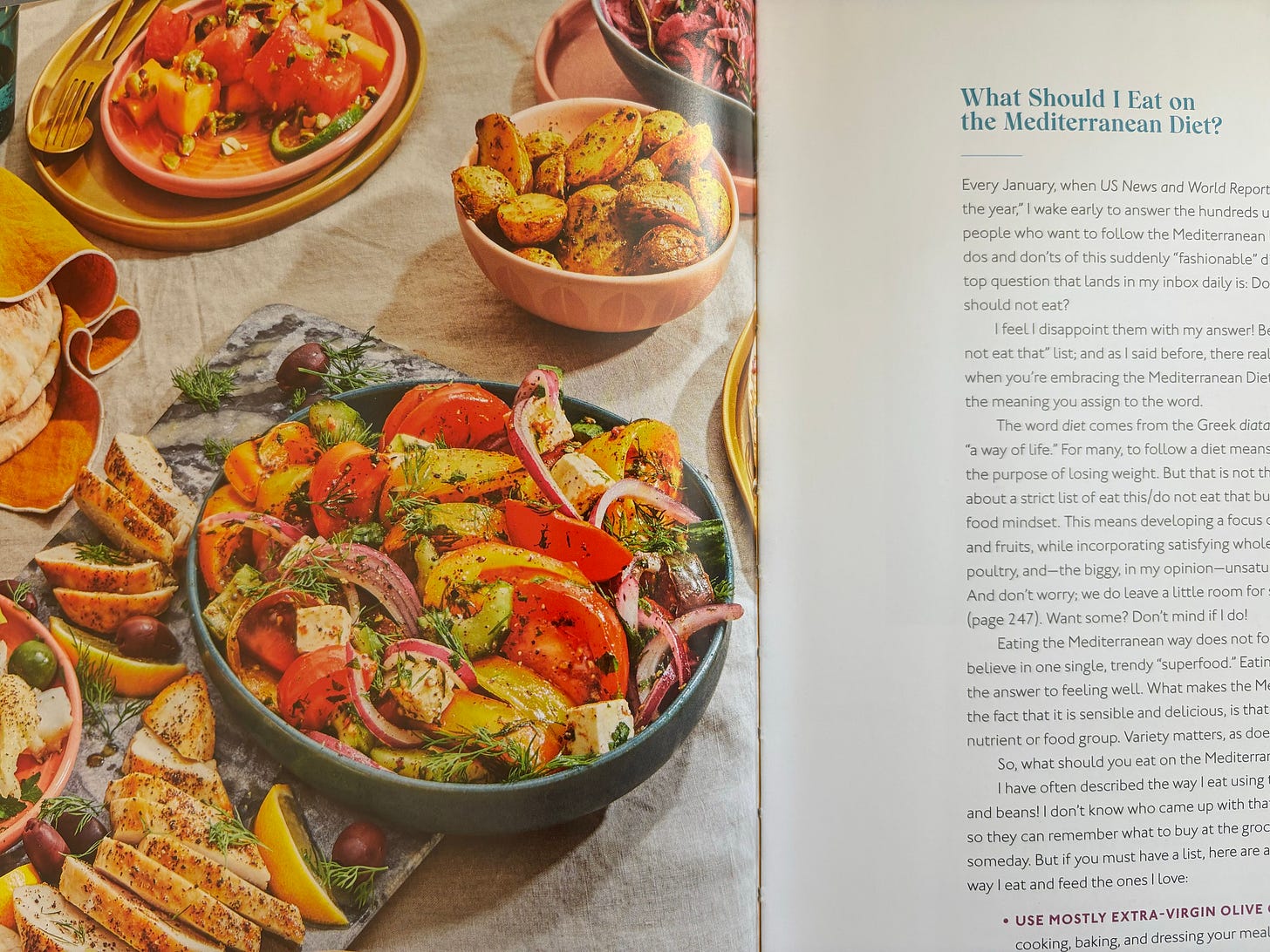
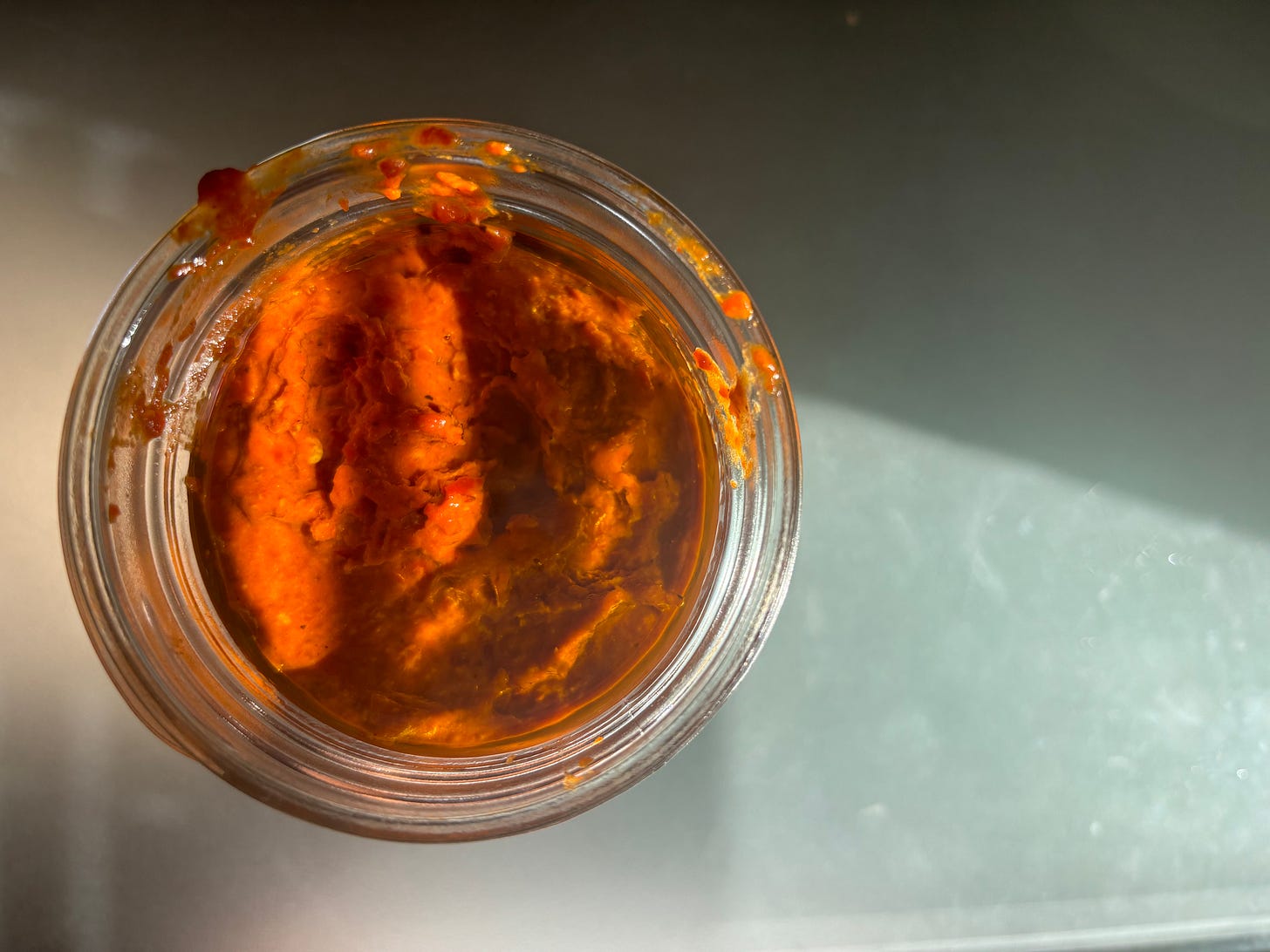
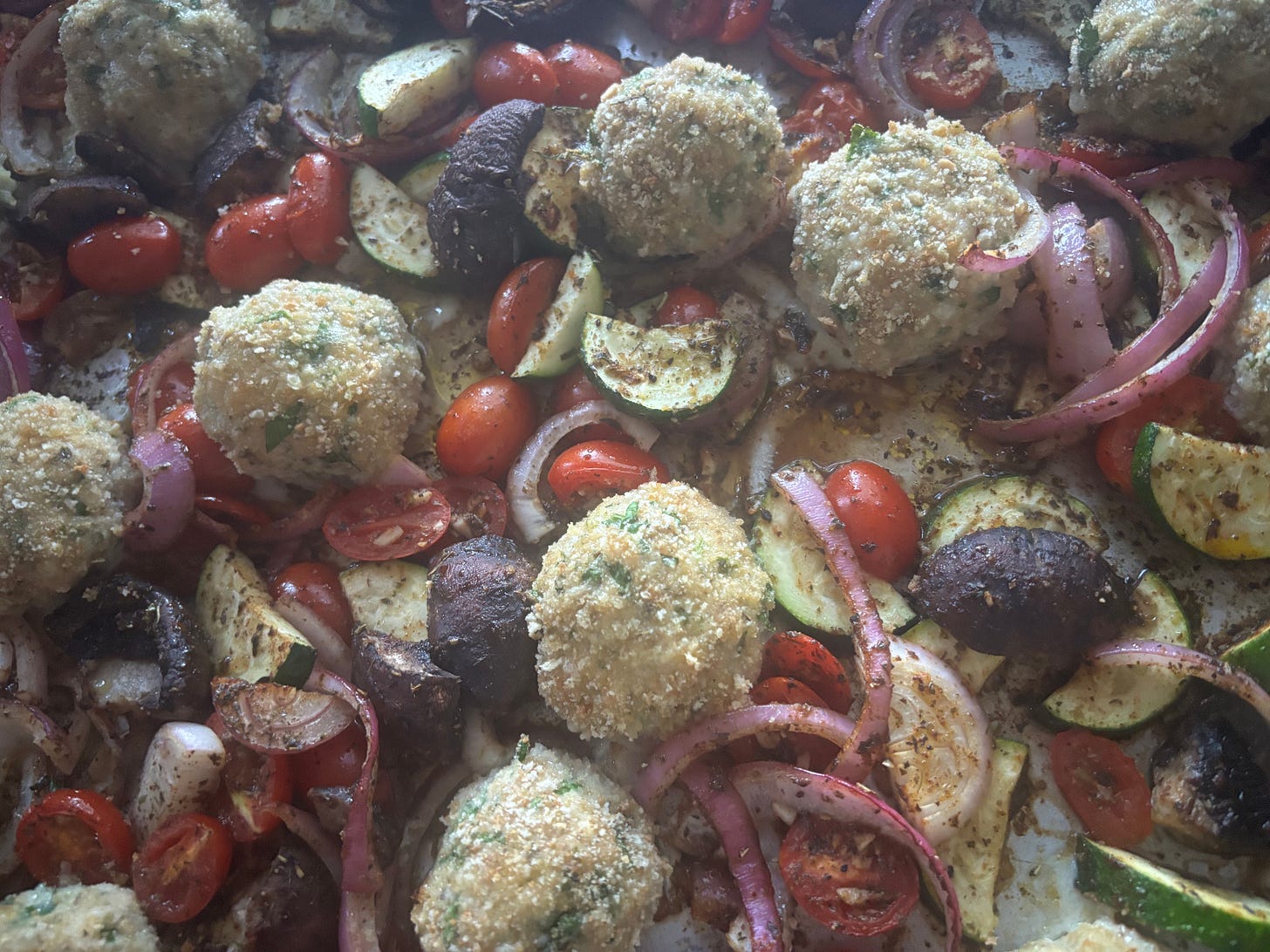
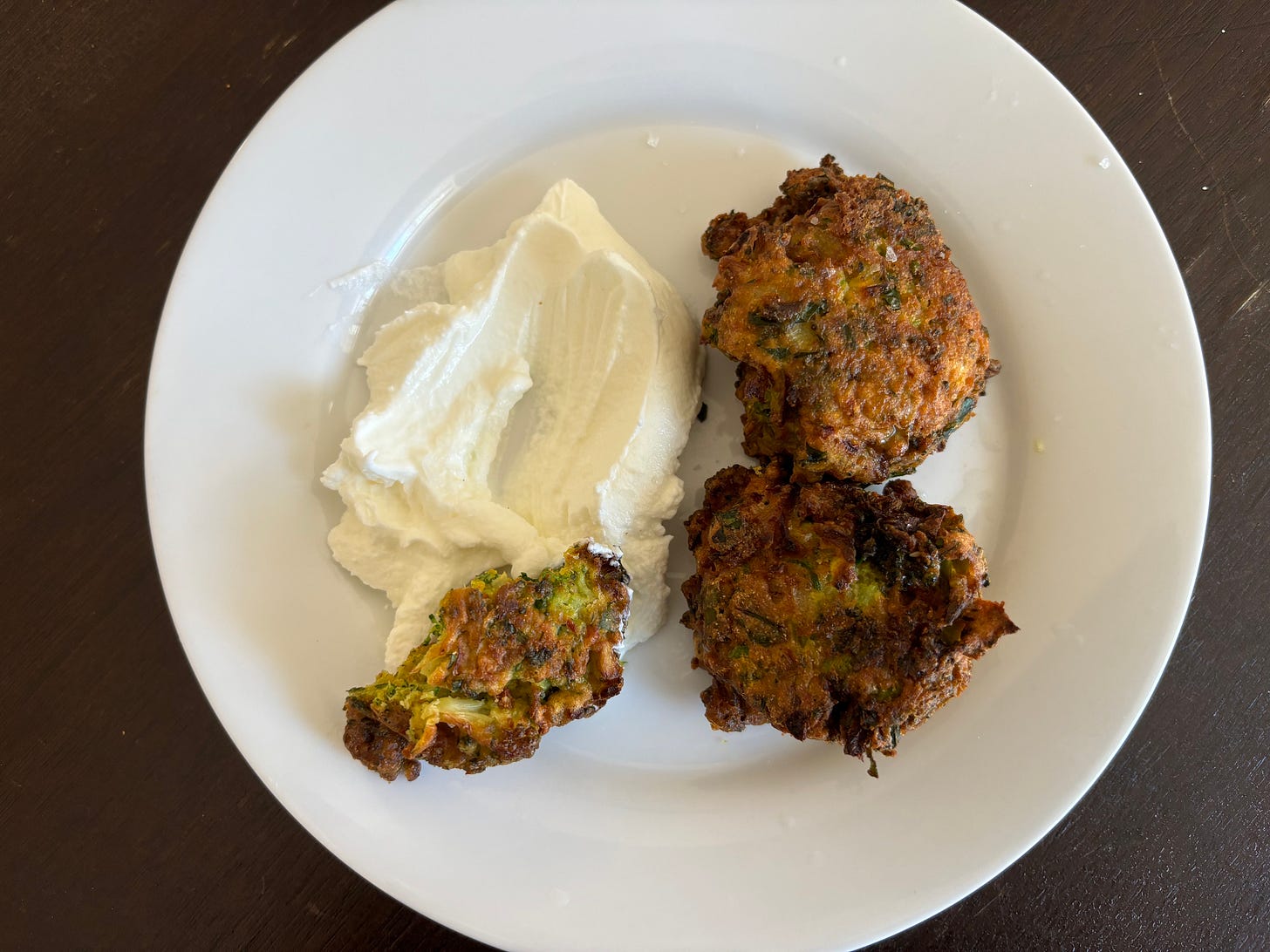
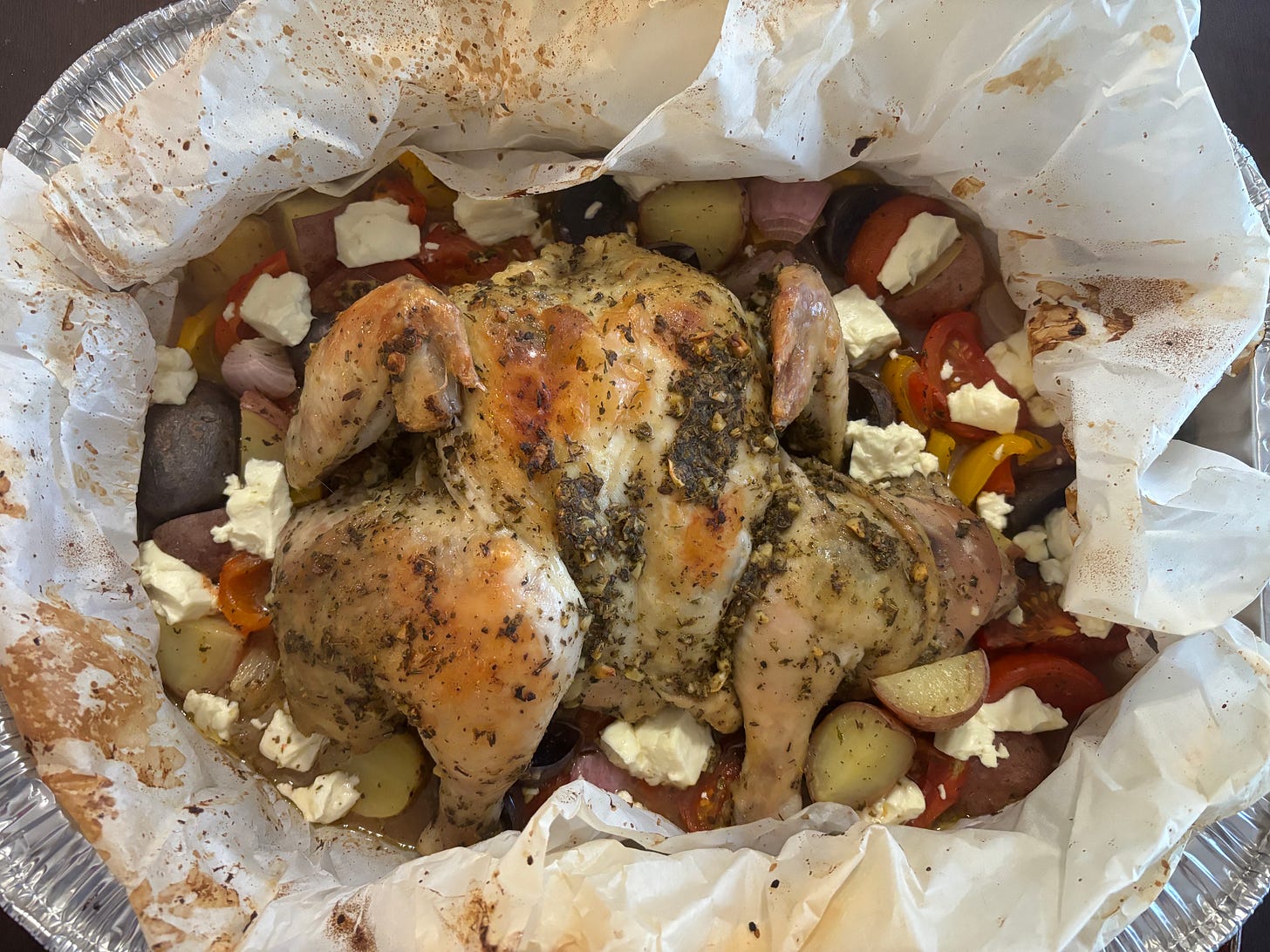
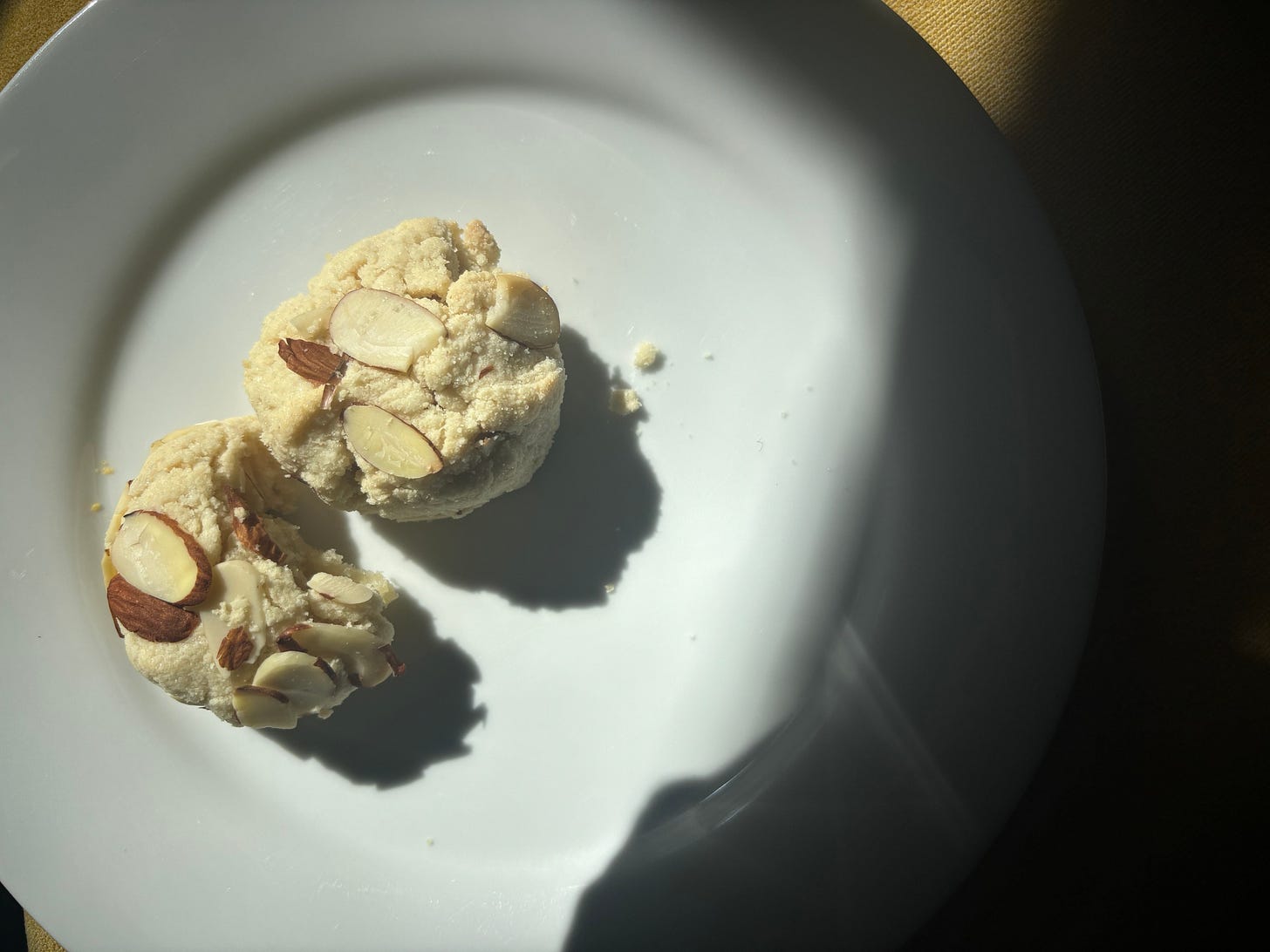
If you want a really good Med cookbook get Nancy Harmon Jenkins "The New Mediterranean Diet Cookbook" - a revision of her earlier work. She lived in various places around the sea (husband was a foreign correspondent), is a very good writer and very knowledgeable about ingredients - especially olive oil. She also has an excellent podcast about life and eating.
Loved this piece.
I mostly cook Mediterranean, and it is true you feel better. Some good quality extra virgin olive oil for the win any day.